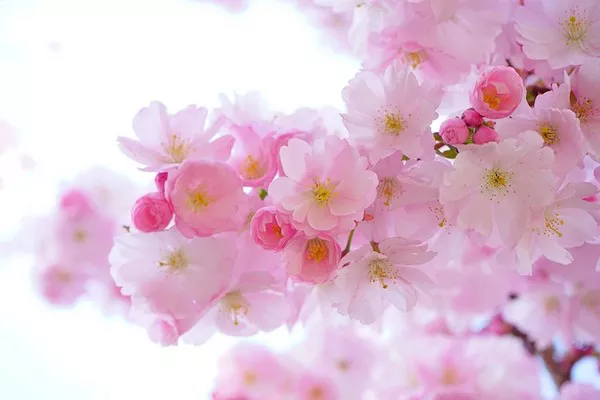Leis, the iconic floral garlands of Polynesian culture, have captured the hearts and imaginations of people around the world. These vibrant and aromatic adornments symbolize love, respect, and celebration, making them a cherished tradition for various occasions. While the concept of lei-making is deeply rooted in Hawaiian culture, the practice has spread across the Pacific Islands and beyond, each region infusing its unique flora and techniques into these beautiful creations.
Origins of Lei-making
The art of lei-making has ancient origins, dating back to the indigenous peoples of Polynesia, particularly Hawaii. Early Hawaiians crafted leis using local plants and flowers, weaving them into intricate patterns to adorn themselves and honor their gods. Over time, lei-making evolved into a significant cultural practice, encompassing a wide range of materials and styles.
Traditional Flowers Used in Lei-making
1. Plumeria (Frangipani): Renowned for its fragrant blossoms and delicate petals, the plumeria is one of the most beloved flowers used in lei-making. Native to tropical regions, including Hawaii, the plumeria symbolizes beauty, charm, and grace. Its waxy flowers, available in various colors such as white, yellow, pink, and red, lend a timeless elegance to leis.
2. Orchids: With their exotic allure and diverse array of species, orchids are a popular choice for crafting leis. These intricate flowers symbolize love, luxury, and refinement, making them perfect for special occasions. Hawaiian dendrobium orchids, in shades ranging from pale lavender to deep purple, are particularly prized for their beauty and longevity.
3. Ti Leaf (Cordyline fruticosa): While not a flower in the traditional sense, the ti leaf holds immense significance in Hawaiian culture and is commonly used in lei-making. Revered for its spiritual properties, the ti leaf is believed to bring good luck, protection, and healing. Its vibrant green leaves add texture and color to leis, symbolizing strength, resilience, and connection to the land.
4. Ginger (Alpinia): With its fiery hues and spicy fragrance, ginger adds a unique flair to lei designs. Native to Southeast Asia and the Pacific Islands, ginger flowers come in various shades of red, pink, and white, making them a striking choice for tropical-themed leis. Beyond their ornamental appeal, ginger flowers are also prized for their medicinal properties and cultural significance.
5. Tuberose (Polianthes): Known for its intoxicating scent and delicate appearance, the tuberose is a favorite flower for lei-making in many cultures. Originating from Mexico, tuberose flowers symbolize sensuality, romance, and purity. In Hawaii, they are often used in wedding leis to evoke love and passion, creating a romantic ambiance for the bride and groom.
6. Hibiscus: As the state flower of Hawaii, the hibiscus holds a special place in lei-making traditions. With its vibrant blooms and striking colors, the hibiscus symbolizes beauty, femininity, and hospitality. Whether used fresh or dried, hibiscus flowers add a touch of tropical elegance to leis, perfect for welcoming guests or celebrating special occasions.
Regional Variations in Lei-making
While Hawaiian leis are perhaps the most well-known, various other regions have their own unique styles and flower choices when it comes to crafting these floral adornments.
1. Tahitian Leis: In French Polynesia, particularly Tahiti, leis are known as “hei” and are crafted using a variety of local flora, including gardenias, jasmine, and tiare flowers. These fragrant and elaborate leis are often worn during traditional ceremonies and festivals, symbolizing love, friendship, and cultural pride.
2. Maori Leis (Maile): Indigenous to New Zealand, Maori leis, known as “maile,” are traditionally made from the leaves of the native maile vine, adorned with feathers, shells, and other natural materials. These symbolic leis are worn during significant ceremonies and rituals, representing unity, respect, and ancestral connections.
3. Samoan Leis (Ula): In Samoa, leis, known as “ula,” are crafted using a combination of local flowers, leaves, and shells, intricately woven into intricate designs. These vibrant and colorful leis are worn during cultural events, weddings, and celebrations, symbolizing joy, prosperity, and community spirit.
4. Fijian Leis (Salusalu): In Fiji, leis, known as “salusalu,” are crafted using fragrant flowers such as frangipani, jasmine, and hibiscus, along with ferns and foliage. These elaborate leis are worn as a sign of respect, friendship, and hospitality, often exchanged during formal ceremonies and social gatherings.
Innovation in Lei-making
While traditional lei-making techniques continue to thrive, modern innovations have expanded the possibilities for creating unique and personalized leis. From custom designs incorporating favorite flowers to eco-friendly alternatives using sustainable materials, contemporary lei-makers are pushing the boundaries of creativity while honoring cultural traditions.
1. Artificial Leis: With advances in technology and craftsmanship, artificial leis have become increasingly popular for their durability and versatility. Made from high-quality silk, plastic, or fabric materials, these lifelike leis offer a long-lasting alternative to fresh flowers, making them ideal for events and occasions where longevity is desired.
2. Lei Etiquette and Symbolism: In addition to their aesthetic appeal, leis carry deep cultural significance and etiquette guidelines, especially in Hawaiian culture. The manner in which a lei is presented, worn, and received conveys various messages of respect, affection, and gratitude. Understanding these customs and traditions adds an extra layer of meaning to the act of gifting and wearing leis.
3. DIY Lei-making: For those eager to experience the joy of lei-making firsthand, DIY kits and workshops offer an opportunity to unleash creativity while learning about traditional techniques and symbolism. Whether crafting leis for weddings, graduations, or other special occasions, DIY enthusiasts can explore a wide range of flowers, foliage, and adornments to create personalized masterpieces.
Conclusion
Leis serve as timeless symbols of love, celebration, and cultural heritage, connecting people across generations and continents. From the fragrant blossoms of Hawaii to the lush foliage of Tahiti and beyond, the diversity of flowers used to craft leis reflects the rich tapestry of flora and traditions found throughout the Pacific Islands. Whether worn as a gesture of affection, a token of appreciation, or a symbol of cultural pride, leis continue to enchant and inspire people around the world, bridging distances and fostering connections that transcend borders.


